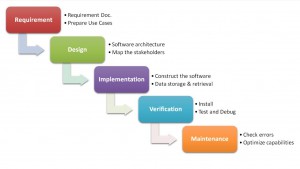Sometimes it’s OK to u0026quot;Waterfallu0026quot;
Apr 20, 2015
 I have led many Agile transformations in the past few years for our clients. These clients, both IT and the business, were ready to change the way they developed solutions. The change required for such a shift caused much ‘pain’ in the organization, but these clients knew that they needed to make the change.
I have led many Agile transformations in the past few years for our clients. These clients, both IT and the business, were ready to change the way they developed solutions. The change required for such a shift caused much ‘pain’ in the organization, but these clients knew that they needed to make the change.
During one of these engagements, someone on the client team told me that they had tried to convince another group at the company into making the move to Agile from their Waterfall approach. When the Waterfall group manager said he had looked at Agile and did not see the benefits for the business and systems he supported, the Agile advocate chided the manager for being “stuck in the mud” and that Agile would benefit the group greatly.
That’s not always right.
Agile has many great benefits, and I run all my projects that way … but that does not mean, “one size will fit all.” I have discussed with some groups, which were seriously considering Agile, but I dissuaded them from doing so, because they would have disrupted their business partners and throw away a lot of really good functioning processes.
The types of projects that benefit from Waterfall are:
- Infrastructure migrations or installations
- Application migrations
- Enhancements for applications that have been in place for a long time
Waterfall projects work best when all or the majority of major requirements are known. Waterfall is a very rigid process, so by defining the scope and requirements upfront, the project manager/leader can define the project plan and create a clear vision and path to the end state. Additionally, having that clear vision allows the business or project funders to allocate the right amount of budget.
The key element of a Waterfall project approach is the scope. Once the project plan is defined and all things are known, then the scope of the project cannot change. Additionally, scope items can be added after the initial project is ended, or maybe in parallel by another project team.
So, if things are running well in your IT organization, meaning the business is happy, projects deliver on time and under/on budget. Then I think you have a pretty good thing going and don’t need to “unstick yourself from the mud” anytime soon.

 English | EN
English | EN 
